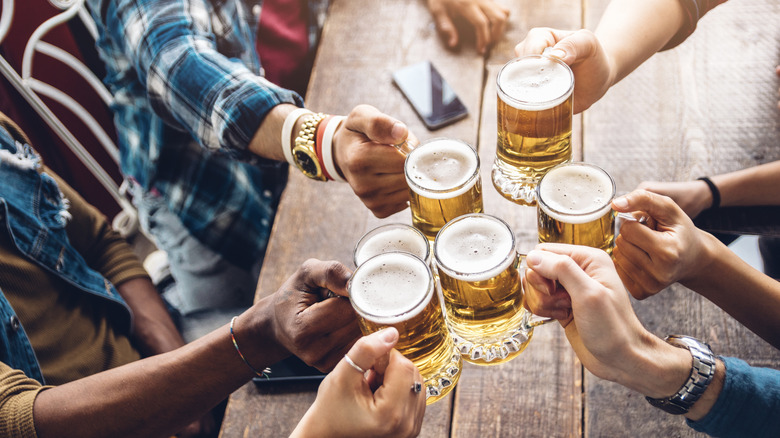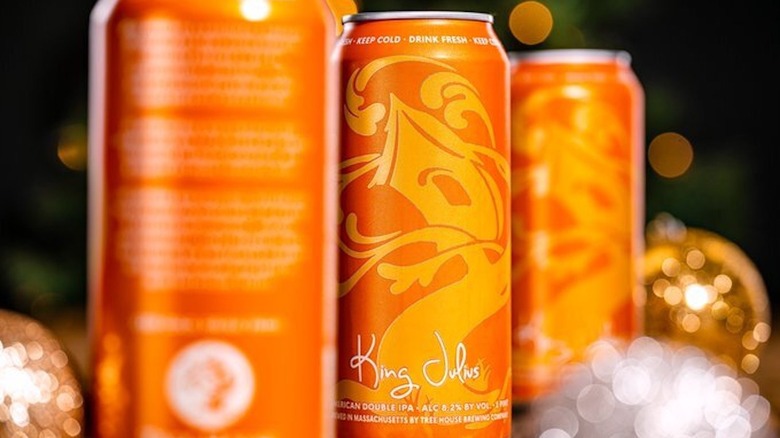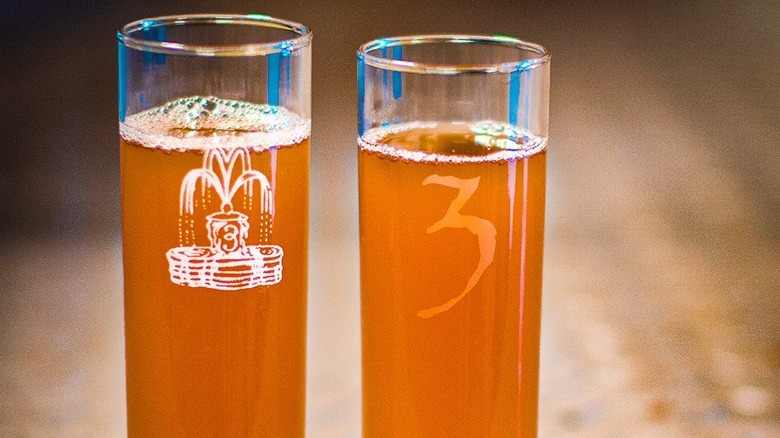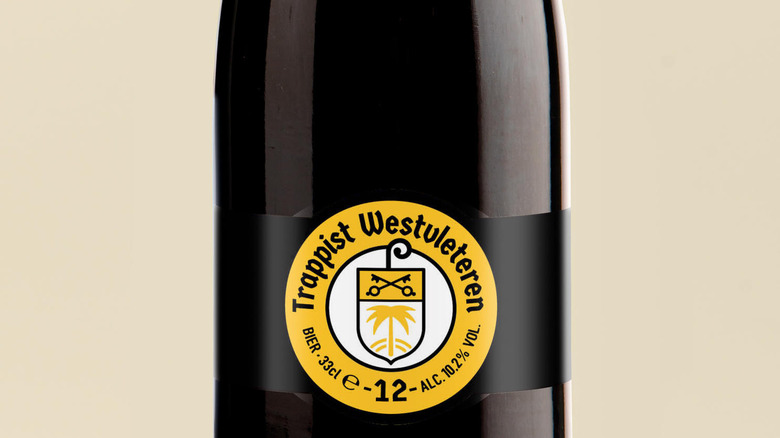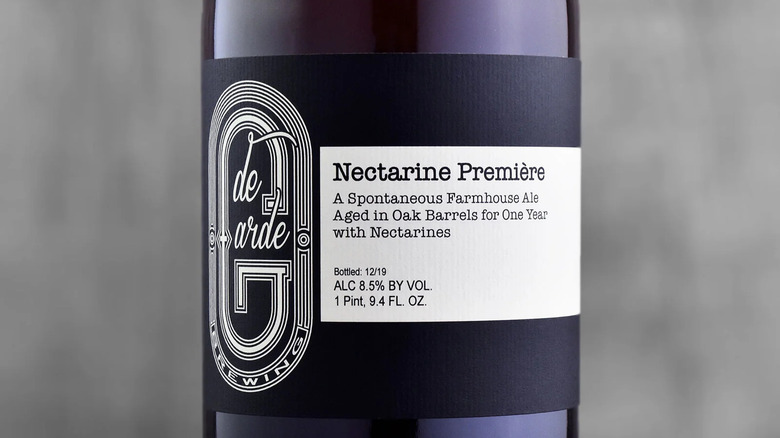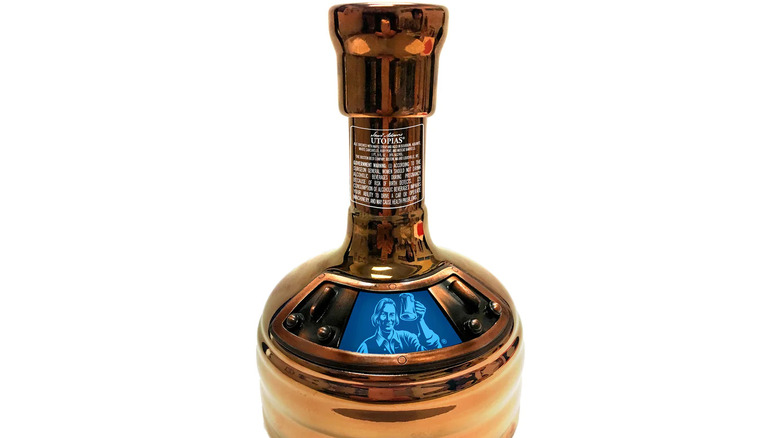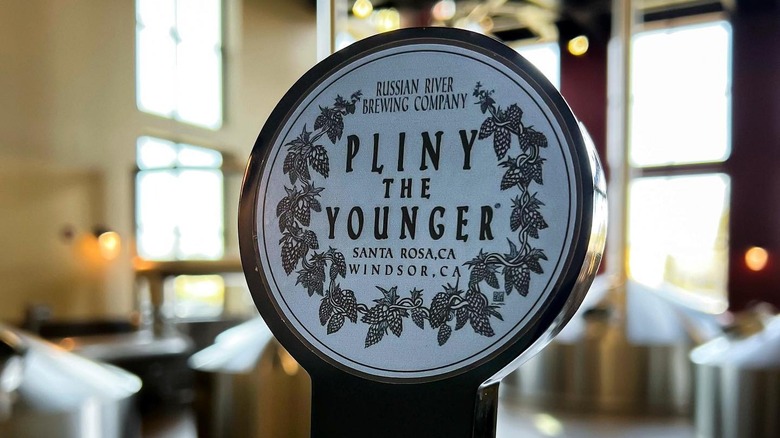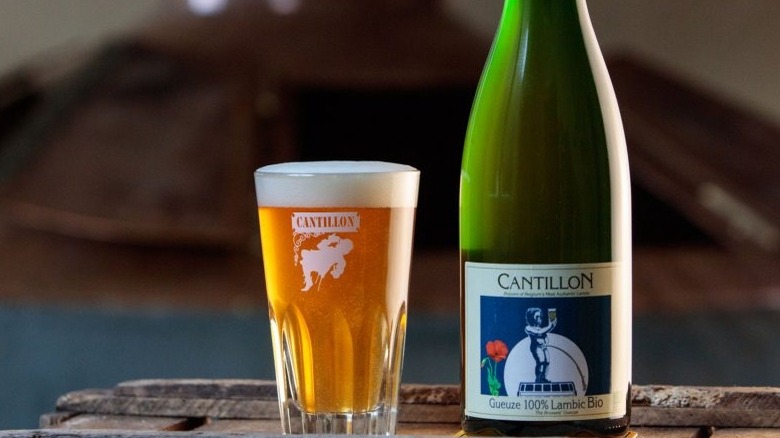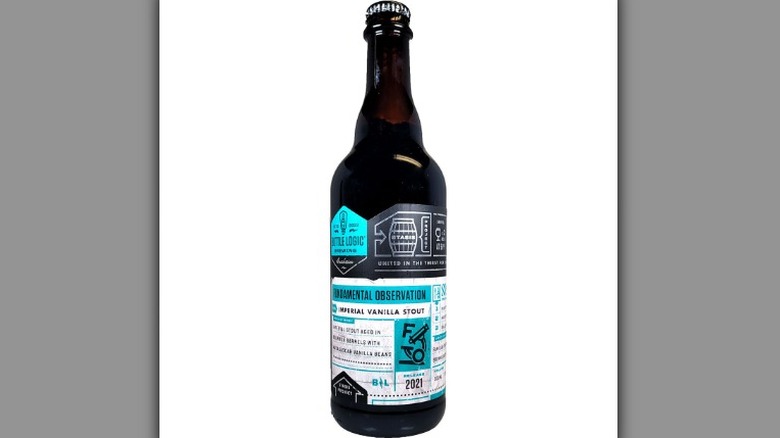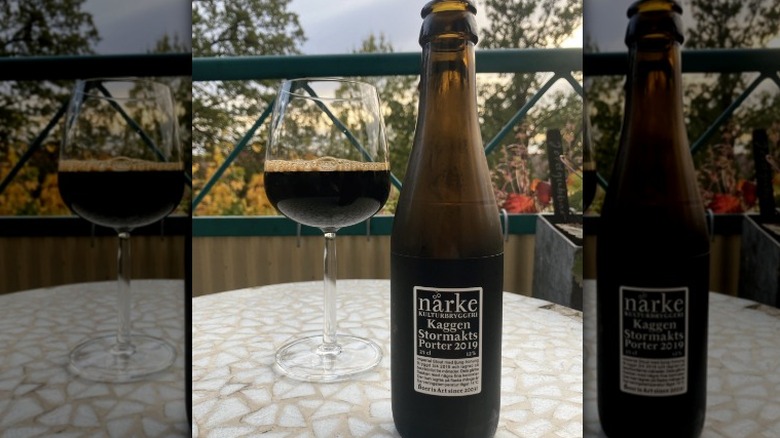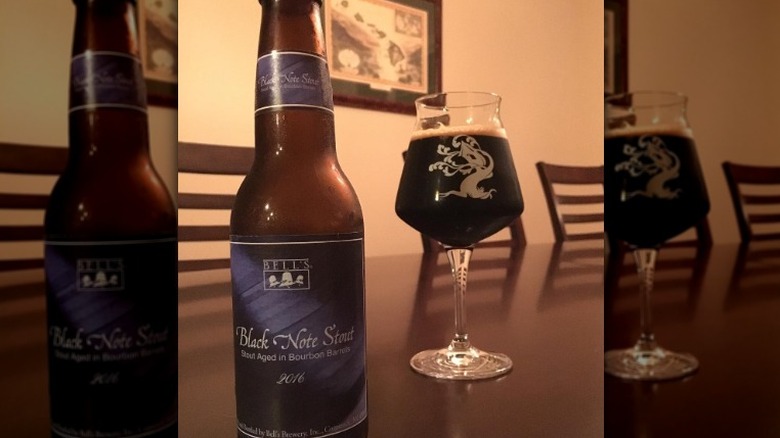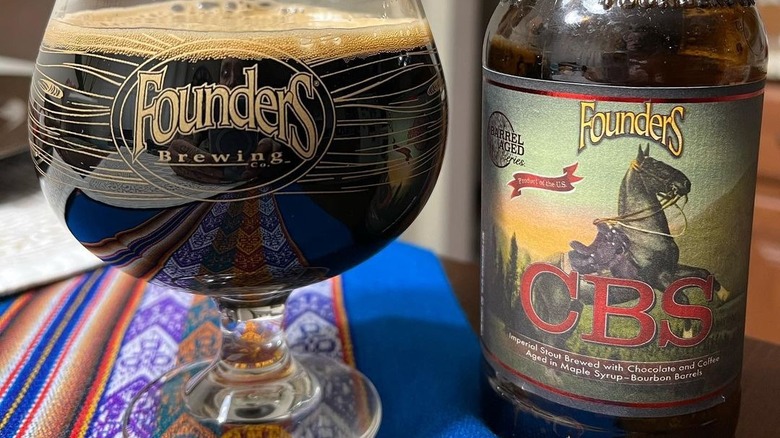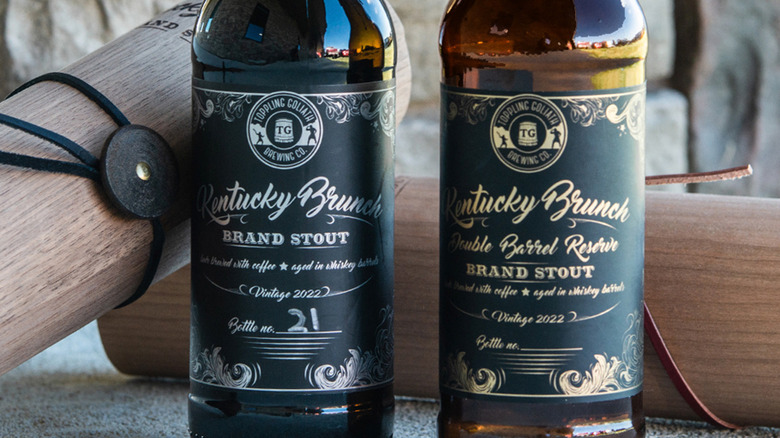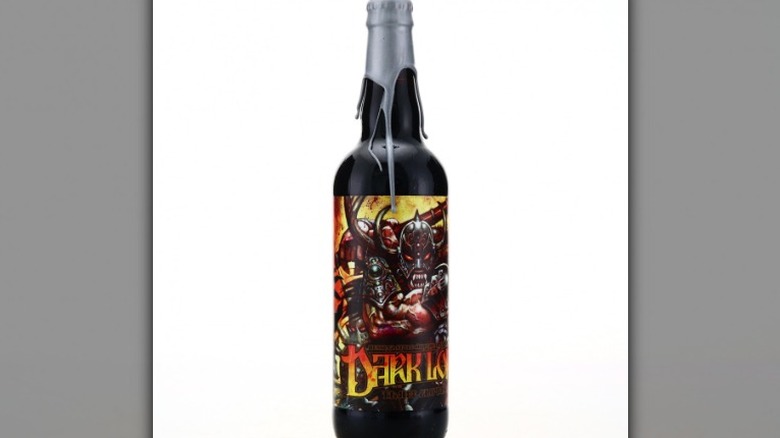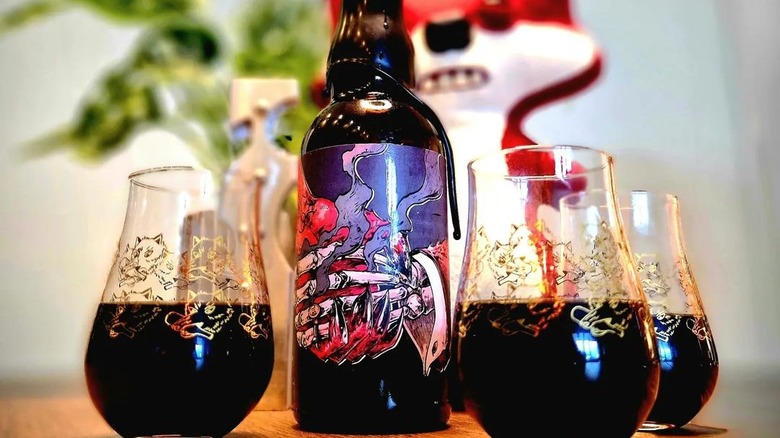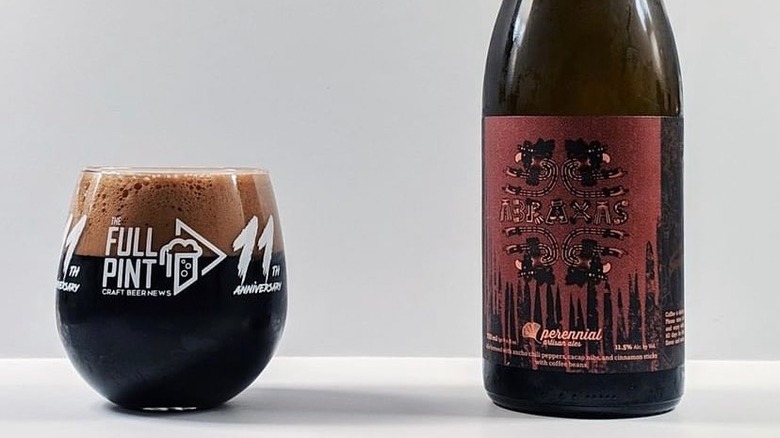15 Rare Beers That Are Worth Tracking Down
Beer has experienced a renaissance of sorts here in the United States over the last decade. President Jimmy Carter passed legislation to make homebrewing legal back in the 1970s, but it took decades for it to fully take hold of the drinking world. Craft breweries began popping up in pockets around the late 1980s and into the early 1990s, which helped start the snowball effect. Now, most towns have at least one, if not multiple craft breweries, and grocery stores have a hard time keeping up with the continual flood of new beers.
With the constant release of new beers and expanded distribution from breweries around the country, it can prove difficult to know what beers are good, what beers are duds, and what beers are diamonds in the rough. Often, the best beers not only in the United States but around the world are difficult to obtain. Either due to location or small production or cost, the best beers aren't necessarily exclusive, but sometimes hard work really does pay off when it comes to tracking down the legends of the beer industry.
Whatever style of beer you like, if you want to try the current best of the best beers, here are several to put onto your beer-drinking bucket list.
King Julius From Tree House Brewing Company
In many ways, Tree House Brewing Company has become an IPA-lovers mecca. It first opened in 2011, and now operates in middle-of-nowhere Charlton, Massachusetts. Thankfully, Massachusetts is small, so it's only a 60-mile drive from Boston, along mostly one-lane roads.
Why is this important? Tree House Brewing Company has zero distribution. The only way you can buy any of the beers is to stop by an official location. The brewery has expanded a bit, though, with satellite locations around Massachusetts and one in Connecticut.
We could list a good dozen beers from Tree House Brewing Company to sample, but King Julius is it's highest-rated on Beer Advocate, so we'll go with that one. The reality is, if you're driving out to central Massachusetts, you're going to be buying more than one. King Julius is a New England IPA with an 8.2% ABV. It might end up being the thickest, juiciest NE IPA you'll ever have. A word to the wise: Purchase your beer ahead of time through the website. You have to often request tickets just to get into the beer garden, and auto-pickups for the beer often snake out of the property.
Zenne Y Frontera from Brouwerij 3 Fronteinen
There's really nothing like a well-made Belgium lambic. Lambics use wild yeast that will continue to ferment long after it has been bottled. This means it will continue to develop (and increase in ABV) as it ages. Much like a fine wine, you can keep a lambic in a cold, dark basement and age the beer if you're able to hold off from drinking it.
Lambics are often made using raspberries, although there's no hard and fast rule to this. In fact, just about anything goes when it comes to Belgian beers, unlike German beers, which generally follow a centuries-old purity law.
The Zenne Y Frontera from Brouwerij 3 Fronteinen is one of the best lambics you're going to find anywhere. Of course, you're also probably only going to find it in Belgium, as this Beersel brewery (outside of Brussels), dates back to 1883, and it keeps most of its beer local. What makes this particular lambic special? It is aged in 40-year-old wine tasks for a full year. This 7% ABV beer (which will fluctuate, as it will increase the longer it ages) is about as close to a beer meets wine as you're going to get.
Trappist Westvleteren 12 (XII) from Brouwerij Westvleteren
Once upon a time, in the days before IPAs ran rampant and dominated every brewery, convenience store, and booze warehouse, Trappist Westvleteren 12 was seen as the end-all-be-all in the beer world. It sat at the top of the Beer Advocate rankings for the top beer in the world for ages. Then, one thing led to another, a new age of beer was ushered in, and everyone began drinking IPAs. The craft beer explosion had begun.
While the beer itself has dropped nearly 50 ranking points in the Beer Advocate rankings, this beer remains one of the most sought-after beers in the world. It, as well as its brother, Trappist Westvleteren 8 (VIII), is made in a 19th-century Cistercian monastery. As one of the original Trappist breweries, beer produced by the on-site monks helps fund the grounds.
Other Trappist beers you might be familiar with include legends like Orval and Chimay. However, unlike these Trappist beers, Westvleteren does not distribute its beer. In fact, you can only purchase the beers in-person (although if you live in Belgium, you can order up to one crate at a time). Should you ever have the opportunity to visit the monastery in Belgium, you'll likely try the three beers for sale. This particular beer (although better classified as a Flemish Burgundy), has a 10.2% ABV.
Nectarine Premiere from de Garde Brewing
In terms of underrated beer styles, few go under the radar like a beautifully produced saison. Also known as a farmhouse ale, these beers were made to be light, fruity, sometimes with a hint of spice, and typically bottled conditioned (live yeast is added to the bottle so it bottle ferments and grows stronger the longer it ages). As the name suggests, Belgian farmers often made this beer and would knock some of the floral beers back after a long day in the fields.
Thankfully, you don't have to work the upcoming harvest in order to enjoy the beer, although that might be easier than tracking the Nectarine Premiere down. De Garde Brewing, which is based out of Oregon, has a very limited distribution footprint. You can find it in select locations in Oregon, Washington State, and northern California. And yet for this particular saison, you'll be better off just heading to the brewery itself.
This saison is a wild ale, meaning it uses wild yeast (similar to a lambic) and is aged in oak wine barrels using nectarine juice for two years. The extended aging gives the white nectarine a surprisingly robust, floral taste that, yes, is perfect after a long, hot summer day. While listed as 6.5% ABV, this number might be higher thanks to the active yeast.
Samuel Adams Utopias from Boston Beer Company
When it comes to a list of some of the most exclusive, hard-to-find beers in the world, Samuel Adams and the Boston Beer Company probably were nowhere near the top of your list of guesses, as it's one of the best-known independent beer brands in the United States. And while most of the beers it produces are easy to locate as well as affordable, Utopias is something else. In many ways, it's in an entirely different beer category all its own.
The brewery puts out a new variation of Utopias every other year, with 2021 serving as the last rendition (which means get your pocketbooks ready, as a new release is scheduled for 2023). The 2021 version was aged with Michigan Balaton Cherries. A portion of the blend was also aged in Sauternes French Oak Wine casks. All-in-all, the final product tipped the ABV scales at a whopping 28%. That's double your average bottle of wine, and close to the alcohol content of scotch than most beers. In fact, the ABV is so high, it's illegal to sell in many states. As for the price? If you're able to find it retail the body goes for $240.
The older the vintage, the more difficult it is to track down, with the very first Utopias released in 2005.
Pliny the Younger From Russian River Brewing Company
Russian River Brewing Company is one of the most respected and sought-after beer producers in the United States. This includes Pliny the Elder, as well as Pliny the Younger. Pliny the Younger is a stronger variation of the IPA, made in triple IPA form.
This is the kind of beer hopheads dream of tracking down, thanks to its robust 90 IBU. A few years ago the only real way to find this beer was to visit the California brewery. One of the main reasons behind it being originally difficult to find the beer was because the brewer's original creator, Korbel Champagne Cellars, was small in stature, which limited production and availability until 2004 when Russian River Brewing fully took over. This did help increase production, and by 2020 distribution had expanded to much of the West Coast, and even some East Coast states, like Pennsylvania.
If you're looking for a beer to start out with on this list that would be "easier" to come by, start with this one. Although, with how distribution continues to expand, it's possible Pliny the Younger might be found in your state any month now.
Lou Pepe Gueuze from Brasserie Cantillon
In all reality, we probably could have put together a list of the most difficult beers to track down and had it be entirely made up of lambics. But, we know lambics aren't for everyone, so we wanted to spread flavors around.
With that said, Lou Pepe Gueuze is basically a lambic blend, but it's such a fantastically delicious beer with exceptional depth that it absolutely needed to be included.
Brewed by Brasserie Cantillon, this gueuze beer is a variation of Belgian lambics that is produced by combining both a young and an old lambic. For this particular blend, once the two lambics are blended the beer is then aged for upwards of three years. This brings the robust taste of an older lambic together with the light, intense flavor of a young lambic. Put together, there is a slightly acidic and floral taste that is highlighted by a dry, wood finish. The 30 IBU demonstrates it has just enough bitterness to wonderfully blend with the sweetness. What's best is this is one of those beers that can keep for years in a dark, dry basement, which will only further the tasting experience.
Fundamental Observation From Bottle Logic
Barrel aging is the new black in the U.S. craft beer world. There has been an interesting evolution in what brewers focus on. Wheat beers were once the toast of the town, before moving to IPAs (can we please bring back the shortly-lived brut IPA style?), and now barrel aging is everywhere.
One beer that does it better than nearly all others is Fundamental Observation by Bottle Logic (part of its Stasis Project, which is dedicated to aging beers). This is an imperial stout, which is going to up the level of malty mouth feel over a traditional stout and is aged in bourbon barrels along with Madagascar vanilla beans. This gives it a strong, robust taste that pushes toward barley wine; the bourbon warmth and vanilla add a touch of sweetness. It all comes together in a complex tasting experience that changes as the beer's temperature shifts.
As is the case with many other bourbon barrel-aged beers, this one is a limited release, although thankfully, at least at the time of this writing, Bottle Logic does release a new batch annually. Of course, as each is aged in unique barrels, each release often offers a slightly different tasting experience.
Kaggen! Stormaktsporter from Närke Kulturbryggeri AB
Sweden isn't necessarily the first beer country on the tip of the tongue, but it still has some fantastic options. That includes this Russian Imperial Stout. It has the malty, bitter chocolate meets espresso taste you crave in a Russian Imperial Stout, only cranked up to 11. However, you're not going to find it in the States. So, if you want this 10% ABV beer, you might need to start looking for plane tickets.
And have you ever wondered what the difference is between a Russian Imperial Stout and a regular stout? Beyond having a higher alcohol content, the first "Russian Imperial" was brewed in England for one Emperor Peter the Great of Russia. And what about an American Imperial Stout? Imperial is going to mean it's stronger in alcohol. As for America vs Russia? It's mostly just a name (although some will tell you Russians are drier in mouth feel while American has more bourbon and coffee tastes, but in terms of brewing standards, they are the same).
Black Note Stout from Bell's Brewery
Bells is about as old school as it gets in the craft beer world, as this Michigan brewery dates back to the 1980s. While probably best known for its Two Hearted Ale, the brewery's Black Note Stout is its most sought-after. That's because it isn't produced every year (although there was a 2023 edition), and bottles are limited. The American Imperial Stout blended its Expedition Stout with its Double Cream Stout to produce a truly remarkable beer (with an 11.2% ABV).
The easiest way to try and wrap your hands around one of these beers is to head out to the Bells Brewery in Comstock, Michigan just as a new batch is being released. There are no set dates or time periods for this, but as a stout, you can expect the brewer to release it just in time for a Michigan winter.
Canadian Breakfast Stout from Founders Brewing Company
This is another one of those beers that isn't released every year, which instantly makes it more of a challenge to track down. There isn't a set annual or semi-annual schedule for this particular beer, so you basically have to wait on Founders to announce whether or not it's putting one out (every previous release has been during the winter).
The Canadian Breakfast Stout is another beer that ages exceptionally well, so should you find a few bottles, you should pack a few away in a dark basement somewhere. This is basically a version of the company's already fantastic Kentucky Breakfast Stout brewed with coffee and chocolate, and then aged in bourbon barrels that had last been used to age maple syrup, which gives this 11.7% ABV beer a familiar and yet seemingly different taste to other imperial stouts we have listed here.
Kentucky Brunch Brand Stout from Toppling Goliath
In order for a beer to tip the scales as the top-rated beer on Beer Advocate, it needs to come out at the right time, get in front of the right people, and furthermore, be really, really good. Both the Tree House Brewing Company and the Brouwerij Westvleteren beer at one point in time held the top spot. But the craft beer world is fully encamped in its barrel-aged stout phase, and as such, it has helped sweep Toppling Goliath's Kentucky Brunch Brand Stout into the current top spot (at least as of March 2023).
At 12% ABV, this is another stout that is technically classified as an imperial stout, due to its higher alcohol content. This particular beer has a deep, dark chocolate taste with hints of maple syrup and espresso. It's a fantastic deep winter sipping beer. Although you better hurry if you want to grab one, because Toppling Goliath only releases 300 to 400 of these annually.
The only thing we don't like about this beer is the dang wax top on the bottle. Outside of looking cool, does anyone actually like digging at the wax with their fingernails or risk wax falling into the bottle when popping the top? Because we sure don't like it.
Dark Lord from Three Floyds Brewing Company
Much like Trappist Westvleteren 12, in the pre-flooding of IPA and American Imperial Stout days, this was at the very top of the Beer Advocate rating charts. Many of the beers we are listing as difficult but worth tracking down have been at or near the top of the Beer Advocate ranking system. Dark Lord is in a similar category as Pliny the Younger. A few years ago, it was incredibly difficult to find unless you went to the specific brewery, and, in this case, you had to head to Munster, Indiana which is technically in the Chicago metro area (and right in the shadows of Gary, Indiana).
This beer is an absolute classic in the world of American craft beers thanks to its longevity. It is always great when a craft brewery keeps producing namesakes because they are just that darn good.
A Deal with the Devil Double Oaked From Anchorage Brewing Company
Between Alaskan Brewing Company and Anchorage Brewing Company, Alaska has some truly outstanding breweries (it's cold, snowy, and dark for much of the year, so you have to do something). A Deal With the Devil is a unique, double oak-aged American Barleywine. To start the beer is aged in Woodford Reserve Double Oak barrels with galaxy hops, which are bright, citrus-forward hops from Australia. The beer is then blended with both 24-month and 12-month A Deal With the Devil versions before being transferred over into brand-new barrels. This is then aged for an additional nine months in Heaven Hill Bourbon Barrels before transferring into newly emptied Woodford Reserve Double Oak barrels for another seven months.
In short, it is a very long aging process that builds on its complexity in order to produce this 17% ABV barley wine. The long aging process alone keeps production to a minimum and makes it difficult to procure. In case you're wondering, a barleywine is simply a barley-based beer that pushes the ABV of a wine.
Barrel-Aged Abraxas From Perennial Artisan Ales
Of all the under-the-radar breweries in the United States, Perennial Artisan Ales out of St. Louis, Missouri might be at the top. And yet it makes some exceptional beers, ranging from traditional to experimental. The barrel-aged version of its Abraxas beer is not only one of its most well-renowned beers, but it is also one of the most challenging to track down.
The 10% ABV American Imperial Stout is aged for a full year in Rittenhouse Rye barrels along with not only nibs of cacao, vanilla beans, and cinnamon sticks, but also ancho chiles before. If you've never had a robust imperial stout with a hint of chile heat before then you have been missing out. Blended with chocolate and vanilla it almost enhances the flavor profiles while giving a unique spice that is overlooked by so many other brewers.
The beer is in limited release due to the labor it takes to produce the beer, so look for the Barrel-Aged Abraxas around December into January.
